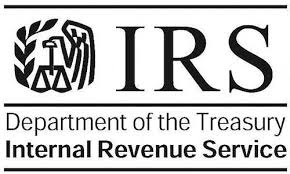By Keiter CPAs

Using a capital gain bailout strategy to preserve predevelopment appreciation of real estate
As the market for new home construction continues to recover from the Great Recession, there will be opportunities for investors and real estate developers to realize gains on property transactions. By utilizing effective and prudent planning, transaction structuring, and documentation, investors and developers can ensure they minimize the tax impact from any gains recognized during the recovery. The key determination in these situations is whether a particular parcel of property is treated as a capital asset held for investment or as property held primarily for sale to customers in the taxpayer’s ordinary course of business.
Seven factors to consider when determining taxpayer primary motive
Whether real estate held by a taxpayer is a capital asset depends on the primary motive for holding a particular parcel of real estate. There are seven factors to consider when determining the taxpayer’s primary motive:
- The nature and purpose of the acquisition of the property and the duration of ownership.
- The extent and nature of the taxpayer’s efforts to sell the property.
- The number, extent, continuity, and substantially of the sales.
- The extent of subdividing, developing, and improving the property that was done to increase sales.
- The use of a business office and advertising for sale of the property.
- The character and degree of supervision and control the taxpayer exercised over any representative selling the property, and;
- The time and effort the taxpayer actually devotes to the sale of the property.
Whether a taxpayer held property as investment or primarily for sale in the ordinary course of business is a question of fact. In U.S. v. Winthrop, the court said that the seven factors listed above “have no independent significance, but only form part of a situation which in the individual case must be considered in its entirety to determine whether or not the property involved was held primarily for sale in the ordinary course of business.” Additionally, in Beidenharn Realty Co., Inc. v. U.S.,the court indicated that the individual factors have varying weights and magnitudes, depending on the facts of the case; however, the court proceeded to explain that the frequency and substantiality of sales is the most significant factor in the analysis.
Theoretically, the differentiating factor between capital gain treatment and ordinary income treatment is the underlying intent or reason why the taxpayer is holding the property. If the property is held primarily for sale to customers in the normal course of their trade or business, any gains from sales will be taxed at ordinary income tax rates. Contrarily, if a taxpayer holds a piece of real estate for speculation or investment, then it is not held primarily for sale to customers and should thus receive capital gain treatment on gains from the sale of such property. The courts clearly intend for capital gains treatment to apply only in situations involving the realization of appreciation in value accrued over a substantial period of time.
Unfortunately, many taxpayers find themselves attempting to build a case after the fact to prove the property sold was investment property instead of property primarily held for sale to customers in the ordinary course of their trade or business. Rather than being stuck in that situation, taxpayers should plan and structure transactions appropriately to establish a fact pattern that clearly illustrates the property was held for investment in order to receive capital gain treatment on any sales. This is supremely important for taxpayers who own a mix of numerous properties since the IRS will likely argue that one or more of those properties are held primarily for sale to customers. Taxpayers who engage in deliberate planning, commencing even before the acquisition of a property, to structure their activities in order to obtain capital gain treatment are much more likely to succeed.
Executing the capital gain bailout strategy
Regardless of whether or not the taxpayer is a real estate dealer, determining whether a property is a capital asset or held primarily for sale to customers is done on a property by property basis. It is common for a real estate professional to own some properties for an investment purpose while owning some for sale to customers. To ensure the most beneficial outcome, a prudent real estate professional will utilize a capital gain bailout strategy to ensure any appreciation that occurred before the property was available for sale to customers will be taxed at the lower capital gains rates. This technique calls for separate and distinct ownership of property being held for investment and property being held primarily for sale to customers. There should be a separate and distinct company set up for each purpose – an investment company and a development company. Before any development activity commences, the investment company should sell the property to the development company for fair market value. By completing the sale in advance of development activities, any gain from the sale illustrates the appreciation in value that occurred while the investment company held the property, which is exactly the manner of appreciation meant to be taxed at capital gains rates.
There is a much greater likelihood of capital gain treatment when there is a lengthy timeframe between acquisition by the investment company and subsequent conveyance to the development company. Whether intentional or not, there is typically a lapse of time between acquiring a property and developing the property due to preliminary matters that need to be addressed before breaking ground. Additionally, a taxpayer might purchase real estate with a long-term intention of development due to the growth of the region. Regardless of the reason or cause, instances where there will be a significant lapse of time between acquisition and development are typically perfect for the capital gain bailout strategy.
Proving property held for investment vs. not primarily for sale to customers
A taxpayer looking for favorable capital gain treatment has the responsibility of proving the property was held for investment and not primarily for sale to customers. The first step is doing so is to have the investment company’s organizational documents identify its purpose as being for investment or speculation in real estate. The taxpayer should always refer to itself as an investment company in all tax filings, agreements, contracts, statements, or other documents. The IRS will use any reference to the company as a real estate developer, dealer, professional, or similar language to make the case that the taxpayer held the property primarily for sale to customers in their ordinary course of business. The investment company should never refer to the company holding the property for development, subdivision, sale, or marketing to third parties, even in documents for internal use only. Any such statements will endanger the position that the property is being held for investment.
For the duration that the investment company owns the property, it must not engage in any activity that could indicate its intention to develop the property. The courts have previously held that activities such as conducting a preliminary geotechnical investigation to evaluate soil conditions for development, obtaining approval by the local government of final development plans, and obtaining approval of the subdivision plat by the local planning board did not establish the property was held primarily for the sale to customers. However, improvements to the property itself substantially increase the risk that the IRS or the courts may find that the company held the property primarily for sale to customers. Any indications that the taxpayer’s intention was to develop the property may jeopardize favorable capital gain treatment.
IRS challenges
In addition to the taxpayer’s intent, the IRS has attacked taxpayers’ business purpose behind the two separate entities multiple times in the past. The IRS typically claims there was no independent business purpose other than tax avoidance for separate investment and development companies. Furthermore, the IRS argues that since there is no legitimate business purpose for the separate entities, the activities of the development company should be attributed to the investment company resulting in the investment company holding the property for sale in the ordinary course of business. However, in each case, the court completely rejected these arguments from the IRS and affirmed that protecting the assets of the investment company from the risks and liabilities associated with developing the property was a legitimate business purpose. In addition, the court continuously rejected the argument that identical ownership of the investment and development companies doomed capital gain treatment.
In order to preserve the business purpose of the investment company and keep the two companies separate and distinct from each other, it is of paramount importance to transact all business between the two entities at arm’s-length. This starts with a purchase price at fair market value supported by a third-party appraisal. Taxpayers may be enticed to inflate the price at which the investment company sells the property to the development company in order to convert a larger portion of the post-development ordinary income into income taxed at capital gains rates; but doing so can quickly erode the capital gain bailout strategy and result in all gains being taxed at ordinary rates. The other terms of the sale must also be at arm’s length. These other terms or factors include proration of property taxes, allocation of closing costs between the buyer and seller in accordance with local custom, and payment of costs for recording the deed and mortgage in accordance with local practice. If the investment company provides owner financing to the development company, the terms of the loan should be the same that the development company would receive from a third-party lender. These terms include a reasonable down payment at closing, an interest rate similar to market rates for the type of property, periodic payments of interest and principal by the borrower, and a first mortgage to secure the loan in favor of the investment company.
Another aspect the IRS continues to challenge in these situations is that the development company was acting as an agent of the investment company. Consequently, the IRS argues that the investment company was merely selling land through its related brother-sister development company, so the entire gain should be taxes as ordinary income. In order to defeat the IRS’s agency argument, there are three main practices taxpayers must follow. First, the entities should strictly adhere to formalities establishing their separate existence by maintaining separate books and records, separate bank accounts, and minutes of management meetings. Each entity should also act and enter into agreements solely on its own behalf, completely independent of the other, showing complete respect for the separate existence. Second, transactions between the two companies should be kept to a minimum to strengthen the position that they are separate and independent entities. If there are any transactions between the companies, such as cost-sharing of office space and employees or intercompany loans, they must be at arm’s-length with the taxpayer able to establish that with admissible evidence. Third, while the courts have upheld capital gain bailout transactions when the two companies’ ownership structures were identical, some variation in their ownership structure would strengthen the taxpayer’s position that they are separate and distinct entities.
The last major aspect of executing the capital gain bailout strategy is avoiding the appearance of “for sale to customers.” The investment company must avoid any activities that may give the appearance that it acquired and is holding the property primarily for sale to customers. The seven factors listed at the outset of this article provide guidance on the type of activities the investment company should avoid. The investment company should minimize the number of transactions in which it sells real estate. If the development company is interested in developing a large parcel of real estate owned by the investment company, it should purchase the entire property in one transaction if possible. The investment company should also avoid any development or marketing activities related to the real estate. All such activities should be undertaken by the development company.
Avoiding Section 707(b)(2) – Gains treated as ordinary income
When structuring the capital gain bailout strategy, consideration must be given to IRC Section 707(b)(2). Section 707(b)(2) requires that any gain on a sale or exchange between a partnership and a related party be treated as ordinary income if the property in the hands of the purchaser or transferee is not a capital asset. In a capital gain bailout transaction, the property will be held by the purchaser primarily for sale to customers. For purposes of Section 707(b)(2), a related party of a partnership includes:
- A person owning, directly or indirectly, more than 50% of the capital interest or profits interests in the partnership, and
- Another partnership in which the same persons own, directly or indirectly, more than 50% of the capital interests or profits interests of the partnership.
Avoidance of Section 707(b)(2) is critical to achieving the desired outcome of the capital gain bailout transaction. Therefore, taxpayers and their advisors must proceed with caution if a partnership is involved in a capital gain bailout transaction and more than 50% of the capital or profits interest of the partnership is owned by one partner. However, Section 707(b)(2) does not apply to corporations. Therefore, Section 707(b)(2) can be avoided completely by setting up the development company as an S Corporation.
Conclusion
When planned, structured, and administered effectively, the capital gain bailout strategy can be one of the most beneficial tax strategies for a real estate professional to employ. The strategy can successfully shield all predevelopment appreciation from ordinary income tax rates and save the taxpayer thousands, if not millions, of dollars in tax depending on the size of the project. While implementing this strategy takes a significant amount of effort and time, the benefits will clearly outweigh the costs if the strategy is executed properly.
Questions? Contact your Keiter representative | Email | Call: 804.747.0000
Sources:
-
©2015 RIA Checkpoint
-
Sonnier, Blaise M. “How To Preserve Predevelopment Appreciation of Real Estate.” Journal of Real Estate Taxation Fourth Quarter 2014, 42.01 (2014)
-
Winthrop, 24 AFTR 2d 69-5760, 417 F2d 905, 69-2 USTC ¶9686 (CA-5, 1969)
-
Biedenharn Realty Co., 37 AFTR 2d 76-679, 526 F2d 409, 76-1 USTC ¶9194 (CA-5, 1976)
About the Author
The information contained within this article is provided for informational purposes only and is current as of the date published. Online readers are advised not to act upon this information without seeking the service of a professional accountant, as this article is not a substitute for obtaining accounting, tax, or financial advice from a professional accountant.



